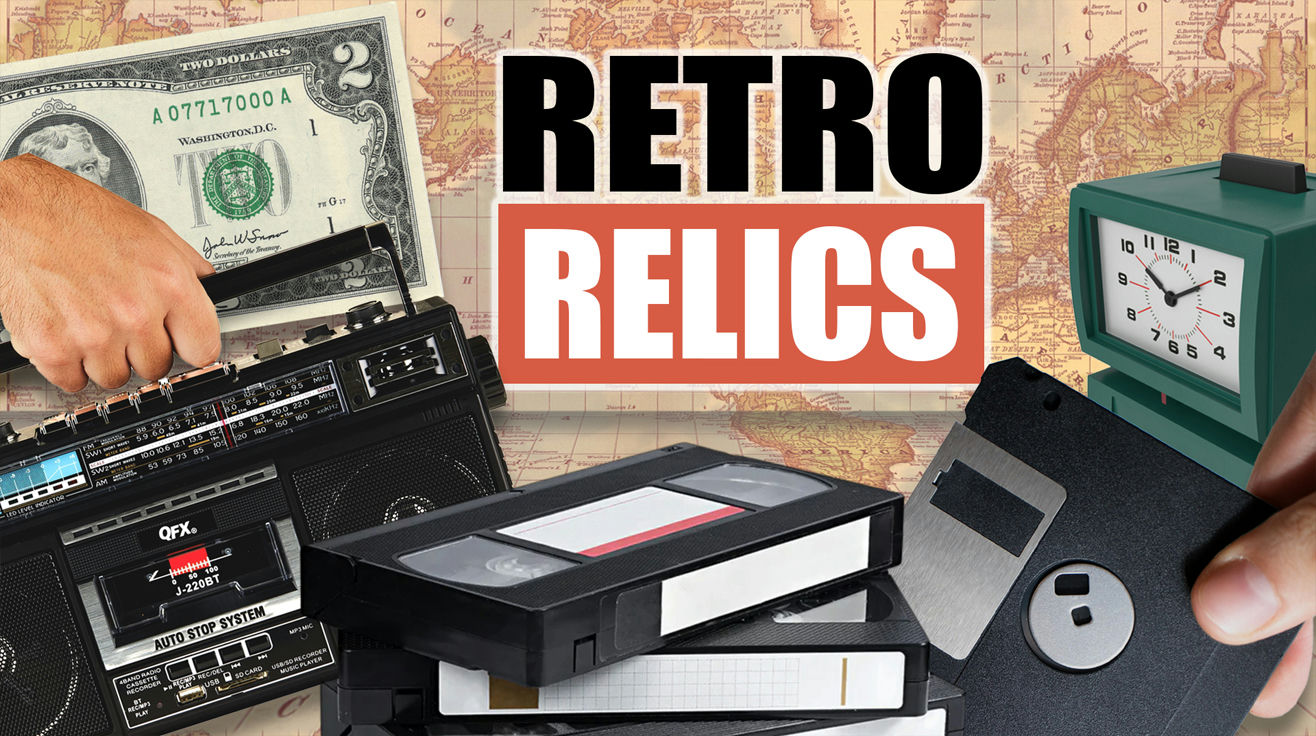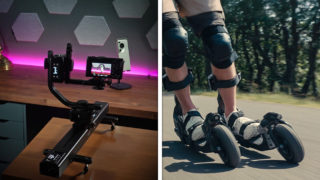Consider how quickly gadgets become relics of a bygone era. Understanding technological obsolescence is crucial for grasping society’s shifting values. Products once deemed essential now gather dust in attics, victims of innovation and changing consumer preferences.
Factors like improved alternatives, evolving trends, and discontinued support led to their decline. From pagers to standalone GPS devices, their disappearance serves as a reminder of technology’s relentless march.
29. Fax Machines
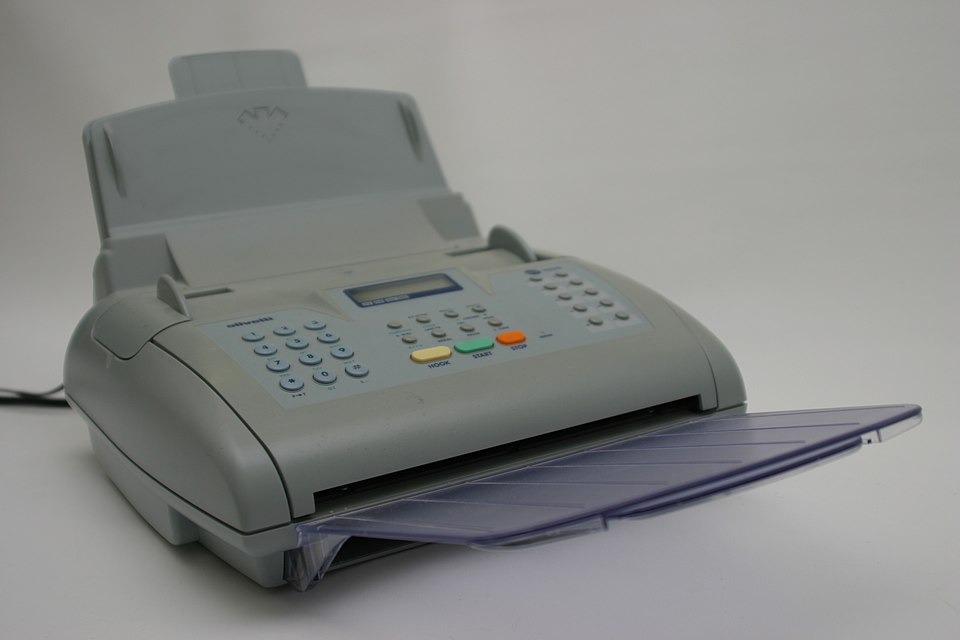
“The fax machine connected the world,” says technology historian George Basalla, and, initially, it did. Businesses faced communication problems before the internet’s rise. They struggled with slow postal services and expensive courier options. The fax machine offered a solution. It allowed instant transmission of scanned documents over phone lines.
The technology operated using analog signals and later digital formats. Each fax machine required a telephone connection and thermal or plain paper. Imagine a lawyer sending court documents across the state in minutes. This revolutionized business with immediate document delivery and provided a reliable communication method prior to widespread internet use.
Fax machines dominated business communication from the mid-1980s through the late 1990s before email became widespread in offices around 2000-2005. Despite being slow compared to email and requiring dedicated phone lines, these devices laid the groundwork for modern digital communication technologies. Today, fax machines remain primarily in healthcare and legal services for security reasons.
28. Home Landline Phones
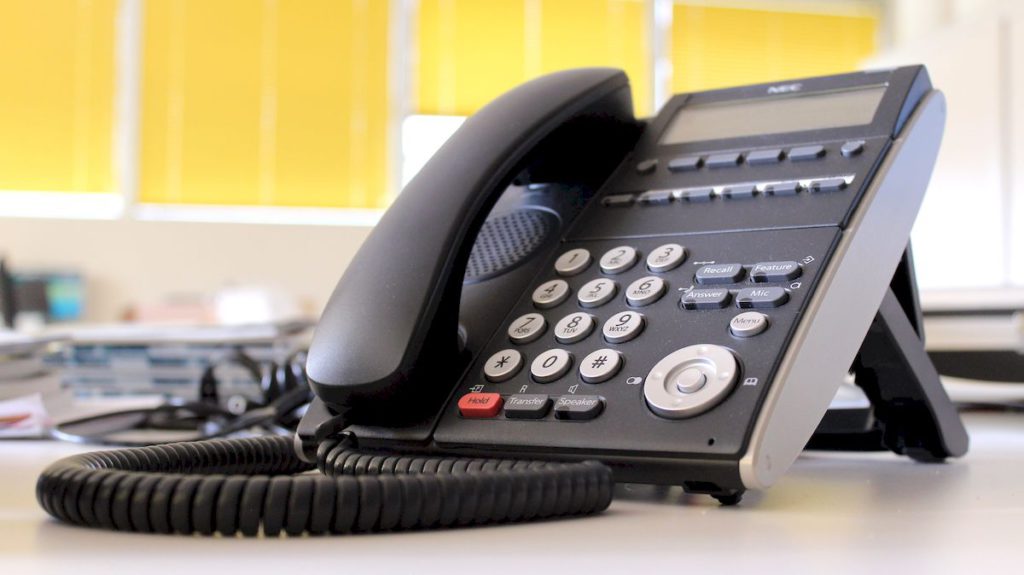
Home landline phones relied on wire-based networks and provided universal household connectivity throughout most of the 20th century. According to Pew Research, landline ownership dropped from 95% of American homes in 2000 to just 37% by 2020, with rural areas maintaining higher usage rates due to reliability concerns.
Families valued landlines for their dependability during emergencies. These devices maintained functionality during power outages when cell towers failed. Their durability represented a key advantage over mobile phones, but their limited mobility ultimately led to their decline with the rise of more modern home appliances and feature-rich mobile technology.
Once ubiquitous in households worldwide, new sales are now mostly relegated to rural areas or for specialized needs. Most people under the age of 30 have never used a landline as their primary phone.
27. Pagers and Beepers
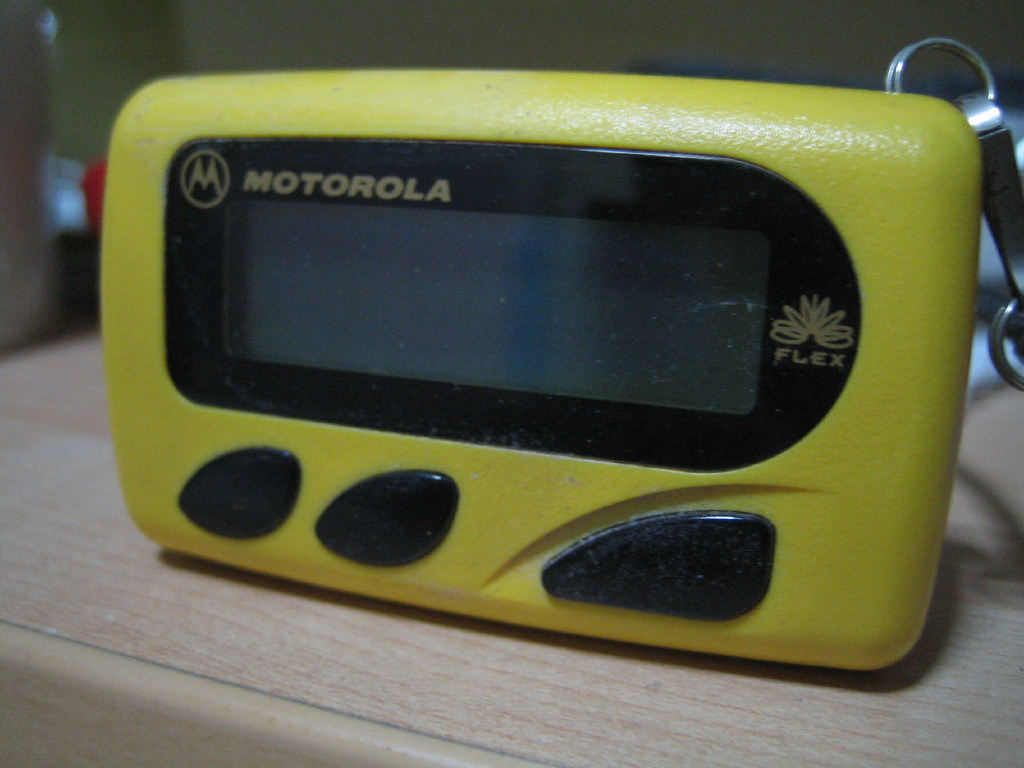
The distinctive buzz of a pager once triggered immediate action. These portable devices received text or numeric messages between the late 1980s and early 2000s, but required users to find a landline to respond. Medical professionals particularly relied on pagers for their reliability in hospital settings where radio frequencies penetrated thick walls better than early cell signals.
Pagers were remarkably compact and lightweight compared to early mobile phones, offering instant alerts especially in medical or emergency sectors. Picture a doctor receiving an emergency notification and rushing to assist a patient.
Despite their limited functionality and dependence on landline phones for follow-up communication, pagers maintained nearly 100% market penetration in hospitals until the mid-2000s when specialized medical communication systems took over. Today, their disappearance from everyday life marks the end of an era of one-way communication, though they remain in use in some critical healthcare environments.
26. Answering Machines
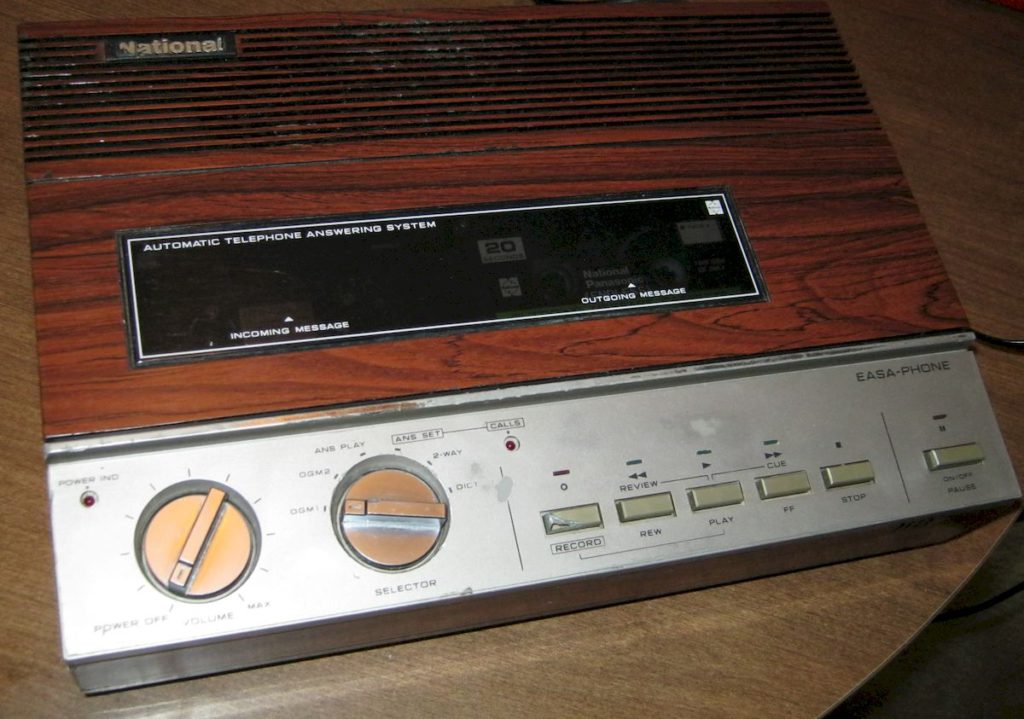
“The telephone created a new form of social etiquette,” said historian Claude Fischer, “but answering machines redefined it.” Before these devices emerged in the 1970s and became household staples in the 1980s, missed calls meant lost opportunities.
Answering machines used tape-based or digital systems to record incoming messages, allowing callers to leave messages on cassette tapes and saving countless missed connections. The familiar beep followed by “leave a message after the tone” became part of daily life. These devices were ubiquitous in homes and small offices during their peak popularity, though physical tapes were prone to wear and damage.
Voicemail services integrated with mobile phones quickly replaced physical answering machines in the early 2000s, offering more flexibility than the analog predecessors. The machines disappeared from most households by 2010, though many families still have recordings preserved as audio time capsules of loved ones’ voices.
25. Payphones

Payphones once offered critical communication lifelines on street corners worldwide. From the 1950s through the 1990s, these coin-operated hardware units provided universal access to communication before the cellular era. Finding a working phone during emergencies or travel was often essential.
Users would dig for spare change, make their calls, and if no one answered, try again later. Typically featuring durable, vandal-resistant designs, these public phones supported emergency and remote access in urban environments. The ubiquity of cell phones eliminated this shared infrastructure.
According to telecommunications data, payphone numbers in the US dropped from over 2 million in 1999 to fewer than 100,000 by 2018. From millions installed worldwide, only a few symbolic installations remain today, such as in New York City. Their disappearance symbolizes the shift from public, shared communication tools to private, personal devices.
24. Floppy Discs
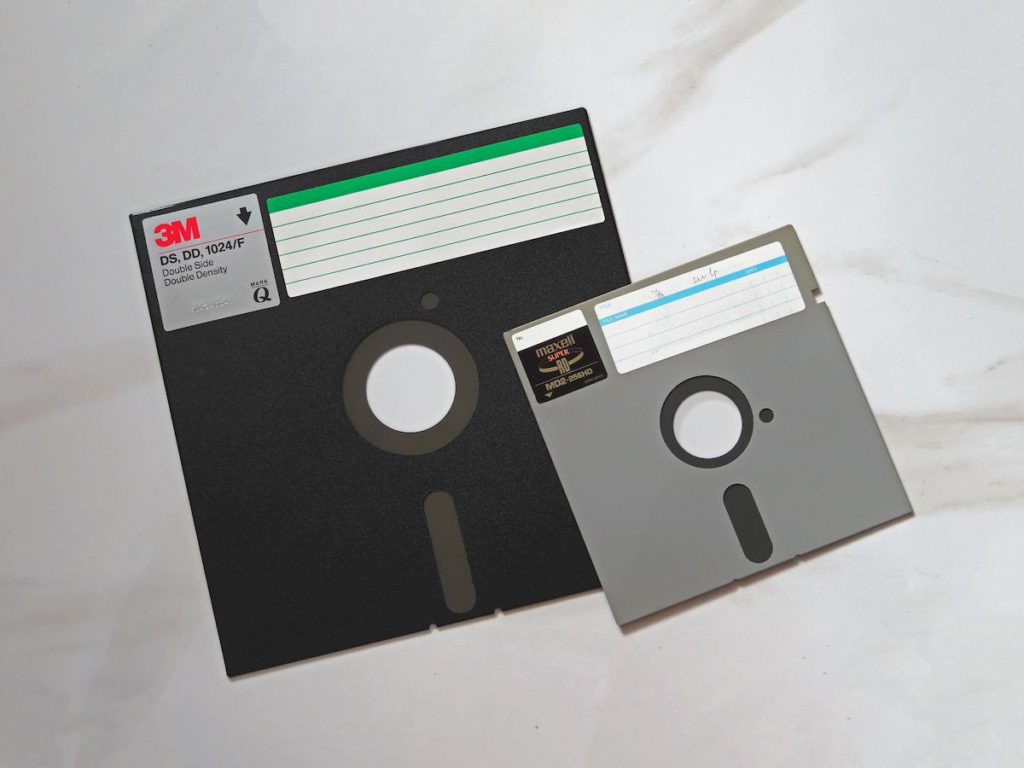
From the late 1970s through the early 2000s, floppy discs served as the primary portable storage medium for personal computers. These thin, square-shaped storage devices offered initially revolutionary but ultimately limited capacity (1.44MB in their most common format). Users would insert the floppy into the computer with a satisfying click to save or transfer data.
These discs revolutionized portable data sharing in the late 20th century and pioneered personal and small-scale data transfer. As file sizes grew in the 1990s, their extremely limited storage capacity became increasingly problematic, and they were prone to physical and magnetic degradation.
USB drives offering 100x more storage emerged around 2000, and cloud storage allowing remote access and sharing became mainstream by 2010. Universally adopted during the 1980s and 1990s before rapid obsolescence, they remain a cultural symbol of early personal computing. Collectors now pay $50-200 for unopened boxes of certain rare floppy brands and formats from the 1980s. One might imagine future technologies will render today’s cloud storage equally obsolete.
23. Encyclopedias

Home encyclopedias represented significant household investments from the 1950s through the 1990s, with complete sets often costing over $1,000 (equivalent to $2,000-3,000 today). These thick, hardcover volumes lined bookshelves in homes, schools, and libraries.
Students relied on them for homework while families consulted them for general knowledge. Encyclopedia salespeople were common visitors to middle-class homes, offering payment plans for these knowledge repositories.
Search engines like Google emerged in the late 1990s, providing more convenient options with vastly more information. Encyclopedia Britannica discontinued its print edition in 2012 after 244 years of continuous publication. What will digital knowledge repositories look like in a century?
22. Phone Books
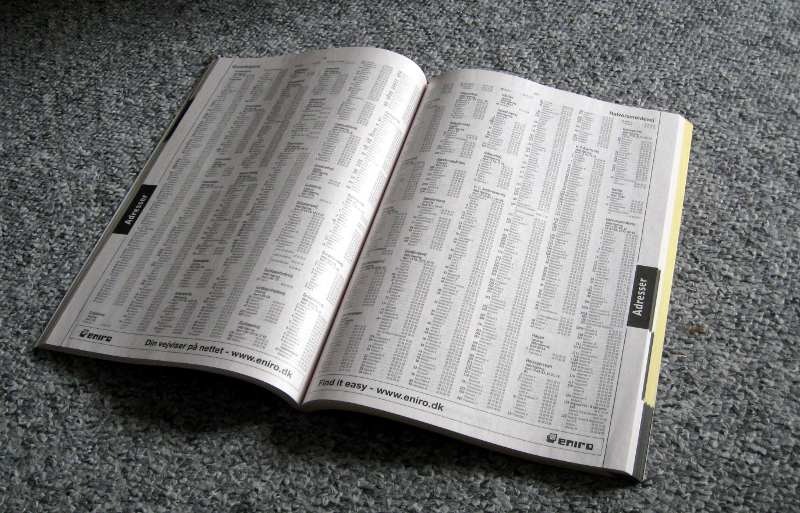
Annual phone books arrived at homes nationwide from the 1930s through the early 2000s. These directories listed every resident and business number in a given area, creating hefty reference tomes that sat beside home phones. According to industry data, U.S. phone book production peaked in 1996 with over 500 million directories distributed.
These books provided comprehensive access to regional contact information with simple, offline functionality requiring no power or connectivity. However, they were bulky to store and wasteful in terms of paper usage, becoming rapidly outdated compared to live digital listings. Smartphones and search engines created instant access to contact information by the mid-2000s.
“Phone books offer a snapshot of community history,” said librarian Alice Johnson, noting their value to genealogists and historians despite their practical obsolescence. By 2020, most remaining phone book distribution became opt-in rather than automatic, and they’re rarely printed except for certain niche rural areas lacking infrastructure.
21. Rolodex
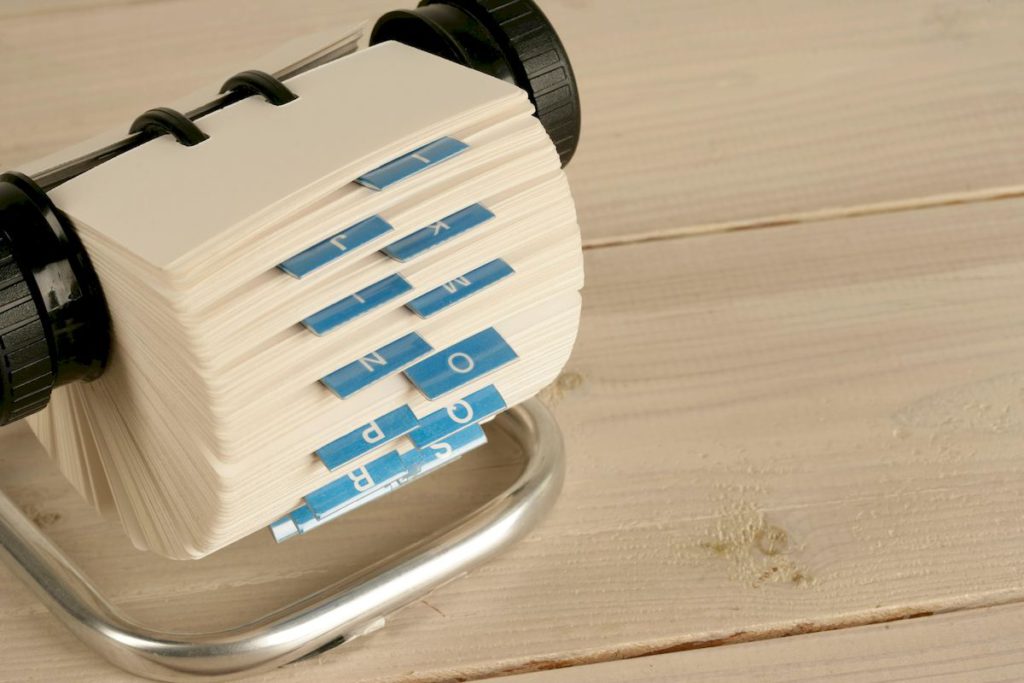
The Rolodex, a rotating desktop file popular from the 1950s through the 1990s, served as the analog LinkedIn of its era. Business professionals relied heavily on these devices, with an estimated 75% of American offices using them by the 1980s. Their rotating design and indexed tabs offered quick access to important contacts, while removable cards allowed easy information updates.
These devices simplified physical organization of professional and personal contacts with a durable and reusable system, becoming a symbol of networking and business professionalism in the pre-digital era. Prior to digital databases, this represented the superior solution for contact management, though it was labor-intensive to maintain and update as contact information changed.
Digital contact lists and CRM software took over in the late 1990s and early 2000s, dramatically reducing demand. Today, vintage Rolodexes sell to collectors for $30-100 depending on condition and model, symbolizing old-school organization and networking.
20. VHS Tapes and VCRs
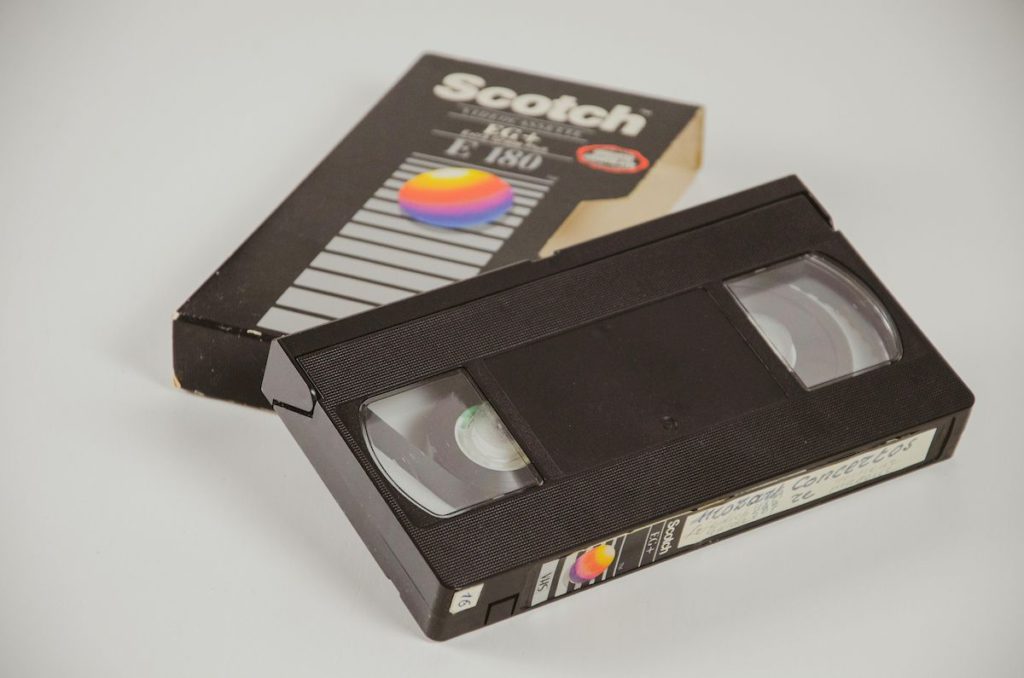
The distinctive whir of the VCR and click of inserting a tape created a familiar soundtrack in homes from 1977 through the early 2000s. VHS tapes, using magnetic tape-based video storage, paired with VCRs to revolutionize home entertainment. Before their emergence, theaters dictated viewing schedules; afterward, viewers controlled when and what they watched.
These devices enabled at-home movie viewing and recording live TV, pioneering the rental and sale of movies for personal use. VHS technology dominated the home video market after winning the format war against Betamax in the early 1980s. Despite their bulky storage format with quality degradation over time and requirement for manual rewinding, approximately 90% of American households owned a VCR by 1998.
DVDs overtook VHS in sales by 2003, with streaming services delivering the final blow a decade later. Though obsolete as a format, VHS tapes remain valuable to nostalgia collectors and archivists, with collectors now paying premium prices for original sealed horror films or titles never released digitally, with rare VHS tapes occasionally selling for hundreds of dollars.
19. Boomboxes
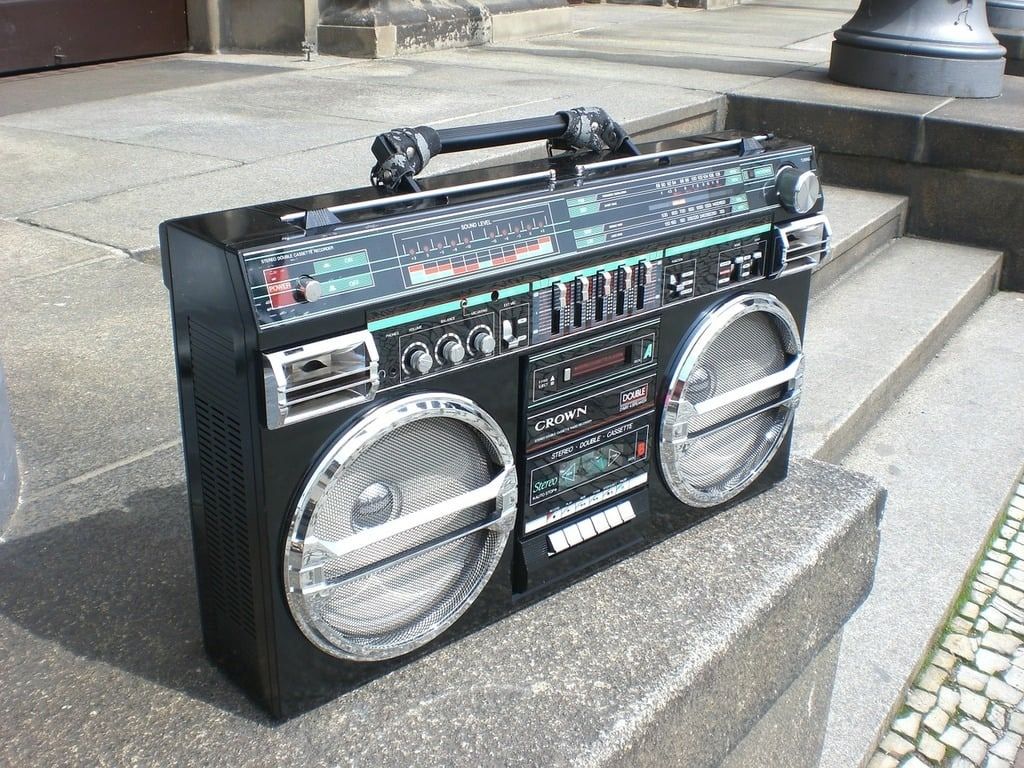
Conventional wisdom suggests technology only shrinks with innovation, but boomboxes challenged this notion throughout the 1980s and early 1990s. These devices combined cassette players, radios, and eventually CD players with large speakers, often including equalizers and multiple sound channels. The boombox became a symbol of urban youth empowerment, allowing marginalized communities to create mobile sound systems that claimed public spaces through music, directly influencing the rise of hip-hop culture.
Battery-powered for portability with optional AC power, boomboxes enabled portable, communal music enjoyment when personal headphones couldn’t create shared experiences. Imagine a group of breakdancers using the booming sound for elaborate choreography in public parks and street corners.
Though bulky and inconvenient compared to modern portable audio and limited by cassette/CD capacity, they significantly shaped youth subcultures worldwide and were hugely popular in the ’80s and early ’90s. Their decline began with the advent of personal music players like iPods. Working vintage models now fetch $200-500 from collectors and retro enthusiasts seeking authentic 80s nostalgia.
18. Cassette Tapes

Cassette tapes defined music portability for a generation from approximately 1975 to 1995. These devices utilized magnetic tape to record and playback audio, available in compact cassettes for personal use and professional reel-to-reel tapes. Making a mixtape for someone special represented a significant time investment and emotional gesture. Songs required careful selection and precise timing to fit the limited space.
The physical interaction of pressing play, record, and stop created a tangible connection to music creation that streaming lacks. These tapes enabled affordable, portable music sharing and introduced mixtape culture and personal music curation, pioneering home recording with simple tape decks. While rewinding tangled tape with a pencil proved tedious, these limitations made music curation more deliberate.
The tapes were prone to wear, mechanical failures, and tape tangling with limited audio fidelity compared to later digital formats. Sales peaked by the late 1980s before being supplanted by CDs, which provided better sound quality. By the mid-2000s, digital music became infinitely easier to share. Recent niche revivals for collectors and retro enthusiasts highlight the emotional value these physical media still hold. The question remains: will future generations feel as emotionally connected to streaming playlists as previous generations did to carefully crafted mixtapes?
17. The Walkman and Discman
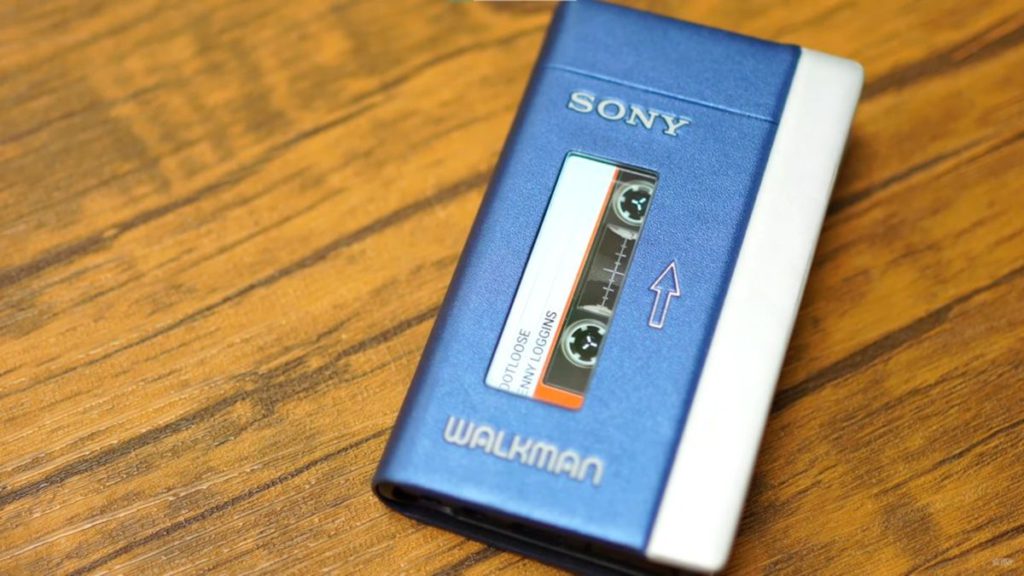
Sony’s introduction of the Walkman in 1979 revolutionized personal music consumption, followed by the Discman (CD player) in 1984. By the mid-1990s, over 60% of music consumption occurred through these portable devices. Before smartphones combined multiple functions, these dedicated music players delivered personal soundtracks to millions worldwide.
Early models notoriously lacked anti-skip technology, turning jogging into a garbled listening experience. However, they liberated music from home stereo systems, offering personal music experiences with cassettes and CDs that made music truly portable. These devices pioneered the concept of private, mobile listening that now dominates how we consume audio content.
Digital music players like the iPod (2001) stored thousands of songs, eliminating the need for carrying multiple cassettes or CDs. By 2010, standalone music players had largely disappeared as phone storage expanded. The world traded sonic imperfection and dedicated devices for convenience and convergence.
16. Jukeboxes
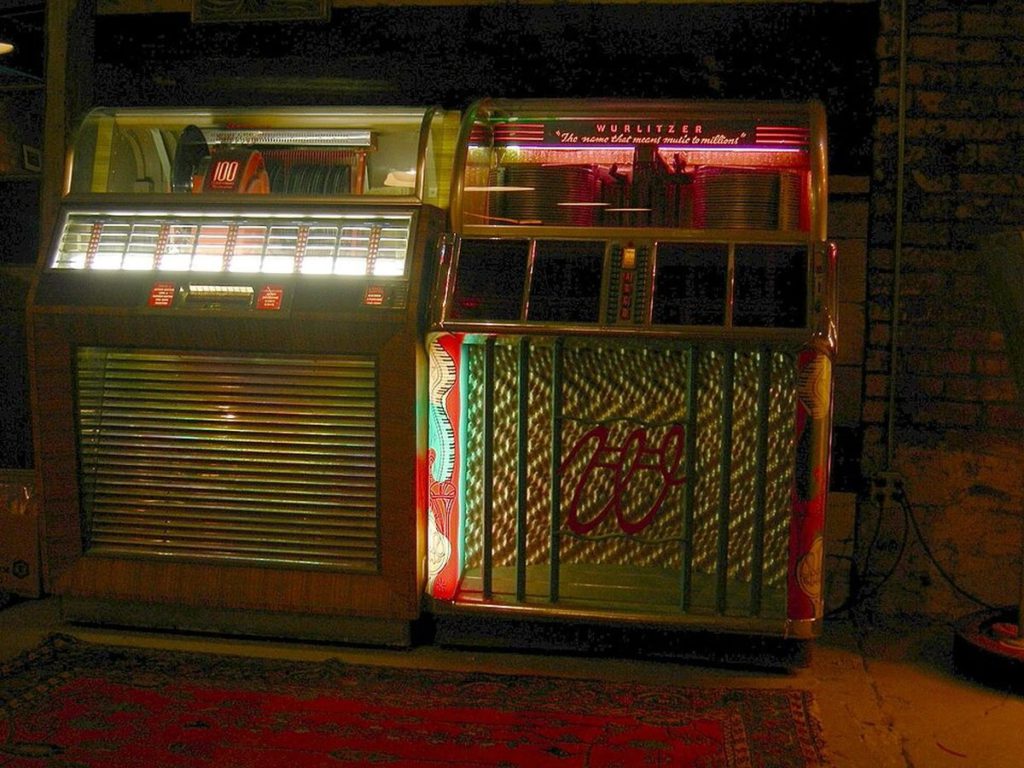
From the 1940s through the 1980s, jukeboxes served as social music hubs in diners, bars, and dance halls nationwide. Walking into a dimly lit establishment, patrons would encounter the glowing lights of these coin-operated music systems. Vinyl records (and later CDs) spun inside illuminated cabinets, filling public spaces with communal soundtracks.
The ritual of song selection sparked conversations and connections between strangers. A young couple might share a dance to a slow song they selected together. These devices promoted communal music enjoyment and social interaction, serving as a cultural icon of the mid-20th century, particularly in the rock ‘n’ roll era. Jukeboxes provided an accessible way for people to experience diverse music genres, though they offered limited music selection compared to digital platforms and required physical maintenance and updates for new records.
Digital streaming services emerged in the 2000s, creating increasingly individualized listening experiences through personal devices and headphones. While vintage jukeboxes now sell for thousands to collectors, the shared musical experience they facilitated has largely disappeared from public spaces, though modern nostalgia has spurred a small resurgence with retro-styled digital jukeboxes. “Music is the great uniter,” said musician Joni Mitchell, but isolated streaming experiences rarely build community connections.
15. Typewriters
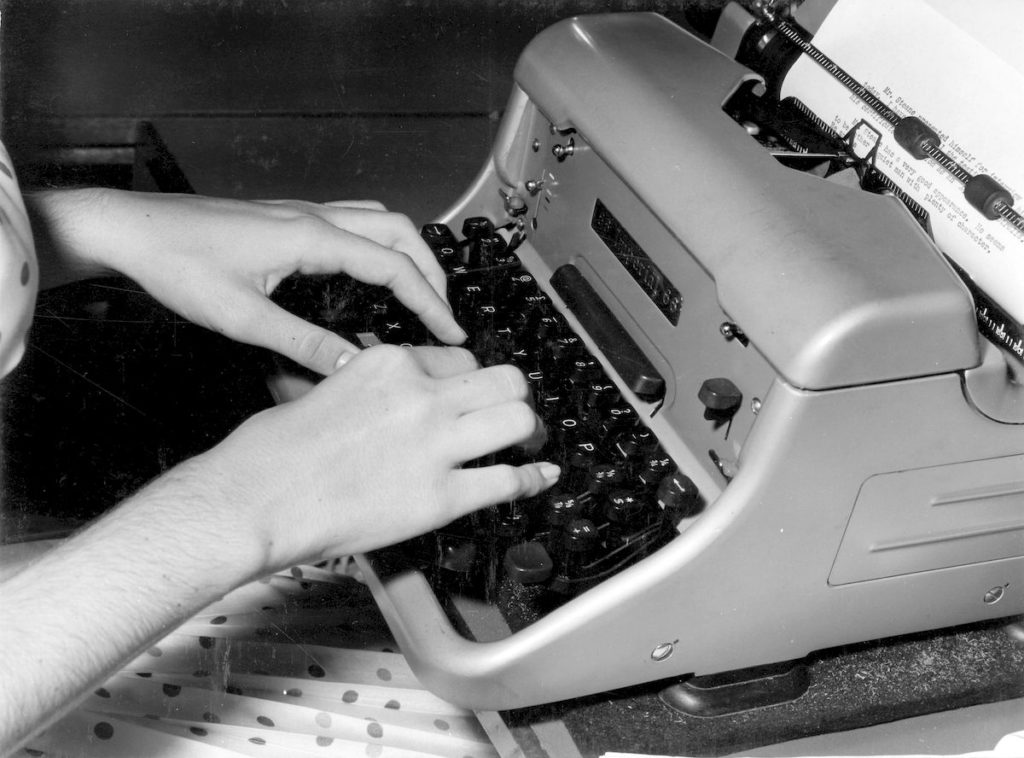
Nearly 90% of offices relied solely on typewriters prior to 1980. These mechanized devices for printing characters on paper operated via keyboard with mechanical levers and typebars striking an inked ribbon. The technology dramatically sped up office work and personal correspondence compared to handwriting, with skilled typists reaching speeds of 60-80 words per minute.
Portable versions enabled mobility before laptops existed, allowing journalists, writers, and business travelers to work on the road. Manual models required no electricity, providing functionality anywhere. Despite their importance to professional communications for much of the 20th century, typewriters had limited editing functionality and were prone to typographical errors.
Typos required manual correction or complete retyping. Computer word processing began replacing typewriters in the 1980s, with the transition nearly complete by 2000. Today, collectors and novelists seeking distraction-free writing maintain a small market for both vintage and newly manufactured typewriters.
14. Punch Clocks
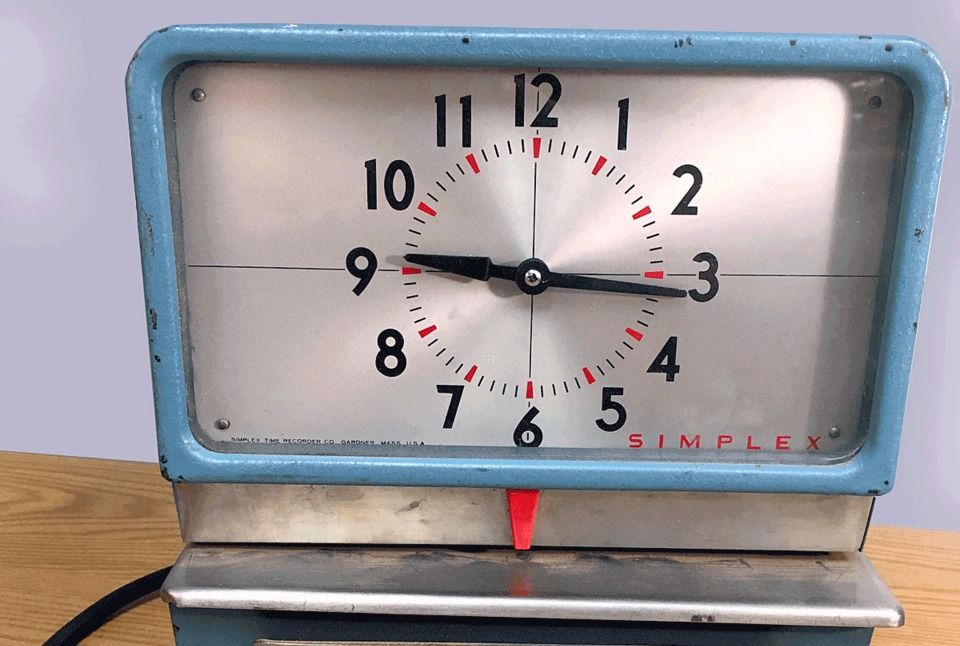
The punch clock standardized employee time-tracking from the late 19th century through the 1980s. These mechanical devices used to record employee work hours featured a clock mechanism, card slot, and time-stamping function that ensured accurate records for hourly workers. Their simple, reliable design became a fixture in factories, warehouses, and offices, standardizing time-tracking for hourly workers and improving payroll accuracy.
Picture workers in a 1950s manufacturing plant lining up to punch their time cards at shift changes. While effective at basic timekeeping, these devices had limited functionality compared to digital workforce management tools. They could be manipulated through “buddy punching” and required regular maintenance of mechanical parts.
Digital time systems emerged in the 1990s, offering greater accuracy and integration with payroll software. These pioneering work-hour tracking tools have been largely replaced by digital systems featuring biometric or app-based time recording. By 2024, less than 1% of companies rely solely on mechanical punch clocks, though their distinctive sound remains embedded in cultural memory.
13. Bank Deposit Slips

From the 1930s through the early 2000s, bank deposit slips formed an essential part of financial record-keeping. Customers carefully filled out account information and deposit details before interacting with tellers who verified and processed the transactions. These paper records created both a sense of security and formality around banking.
Tellers would stamp them with official verification, providing customers with immediate proof of their transaction. The introduction of ATMs in the 1970s began changing this relationship, but the true transformation came with mobile banking apps in the 2010s that created a fast and paper-free experience.
Digital deposits eliminated the need for physical slips and bank visits altogether. Now, less than 10% of deposits involve paper slips as of 2024, marking a fundamental shift in how people interact with financial institutions.
12. Printed Maps and Atlases

For most of the 20th century, journeys began with the rustle of paper rather than the glow of a screen. Road atlases peaked in popularity during the 1960s-1990s, with nearly every vehicle containing some form of paper map. These comprehensive geographic guides bound in book form offered details on roads, terrains, and landmarks using sophisticated cartographic techniques.
Family road trips often featured parents hunched over atlases, planning routes through unfamiliar territory. This practice encouraged spatial awareness and navigation skills that GPS-dependent travelers may lack. These maps were essential for travelers throughout the 20th century and instrumental in global exploration, though they were static and needed frequent updates to remain accurate.
While cumbersome to use and update, paper maps provided reliable guidance without batteries or signal concerns. Their decline began with the rise of GPS and smartphone apps in the 2000s, when real-time digital navigation systems began replacing printed maps. Today, paper maps primarily sell as collectibles, educational tools, or emergency backups for remote travel.
11. Traveler’s Checks
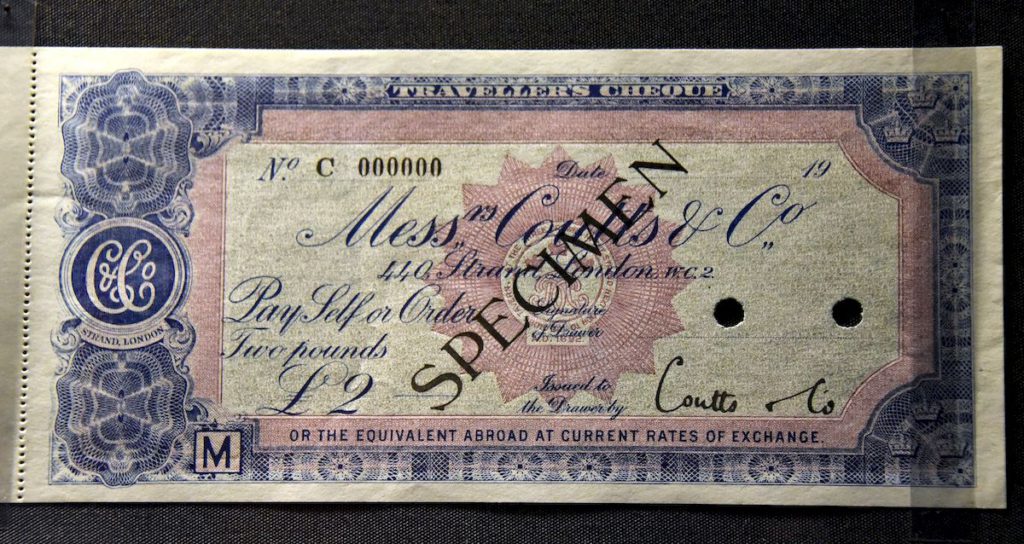
From the 1950s through the 1990s, traveler’s checks symbolized secure international travel before credit cards gained global acceptance. American Express introduced these instruments in 1891, but they reached their peak usage during the post-war tourism boom. International travelers relied on them for purchases abroad, appreciating that stolen checks could be replaced unlike cash.
These paper checks were issued by financial institutions, pre-signed for use abroad, and offered a safer alternative to carrying large sums of cash. Nearly every bank and travel agency issued traveler’s checks, with usage peaking in the 1980s when an estimated 40% of American international travelers carried them. They were widely accepted at banks and international locations in the pre-credit card era.
As credit cards gained international acceptance in the 1990s and ATMs proliferated worldwide in the 2000s, usage declined dramatically. Additional fees made them increasingly cumbersome to use compared to modern electronic payment systems, with declining acceptance at most global outlets today. Traveler’s checks have been almost entirely phased out in favor of debit cards and digital wallets, and most travelers under 40 have never used one, marking a significant shift in international money management.
10. Coin Tokens

The perfect token eliminates fumbling for exact change while speeding up high-volume transactions. Urban transit systems, arcades, and payphones heavily utilized these metallic alternatives from the 1950s through 1990s. These metal discs with standardized shapes accelerated high-volume transactions.
Tokens boasted greater durability and counterfeit-resistance than paper money. During rush hour, thousands of commuters inserted tokens into turnstiles for transportation access. These currency alternatives simplified transactions before digital payment systems existed.
New York City’s subway system alone circulated millions of tokens daily until their 2003 retirement. Like the chips used in casinos, tokens represented specialized currency for specific experiences in urban life.
Cashless payment technology superseded physical tokens by the early 2000s. Tokens grew increasingly inconvenient due to physical handling and storage requirements. Today, transit tokens fetch $5-20 from collectors, with rare varieties commanding premium prices.
“Tokens represent more than currency,” says cultural anthropologist Mary Douglas, “they represent access to shared public infrastructure.”
9. Camera Film
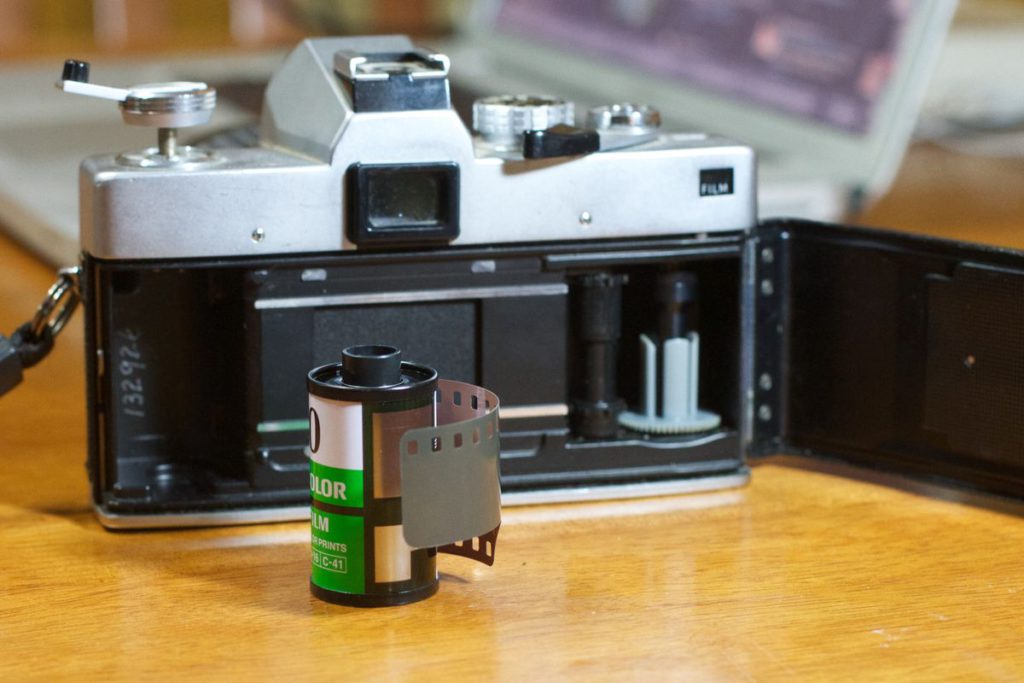
Every photograph meant something when film limited you to just 24-36 exposures per roll. From photography’s dawn until digital cameras gained mainstream adoption in the early 2000s, film formed photography’s foundation. The chemical process necessitated careful handling and precise exposure.
Developing film involved anticipation — sometimes days or weeks of waiting to discover if precious moments were properly captured. Professional photographers mastered film’s limitations, while amateurs accepted uncertainty as part of the creative process.
Digital photography eliminated the 24-36 exposure constraints while enabling instant viewing and unlimited retakes. By 2010, film camera sales plummeted by over 90% as smartphones incorporated increasingly capable digital imaging sensors.
While specialty film photography maintains a devoted audience of artists and enthusiasts, the mass market has embraced digital imaging’s convenience and immediacy.
8. TV Guide Magazine
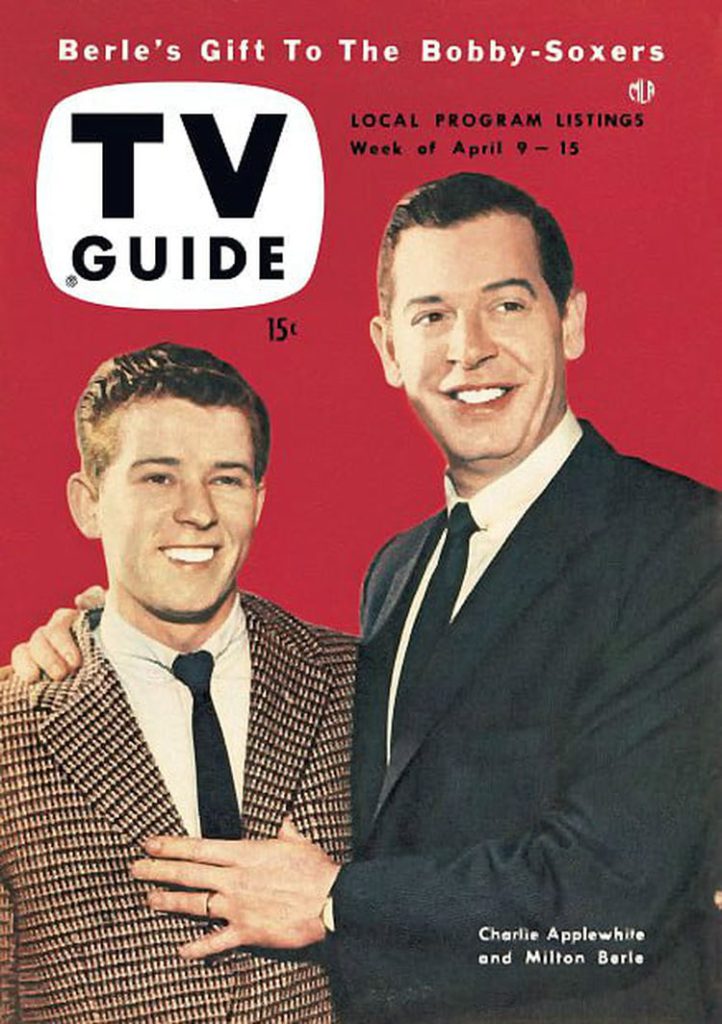
Never miss your favorite show again promised TV Guide, the solution to television planning woes for decades. “TV Guide shaped how America planned its week,” noted media critic Marshall McLuhan about the publication that achieved peak circulation of 20 million copies weekly in the 1970s.
This weekly periodical featuring detailed TV schedules, interviews, and entertainment editorials functioned as a household planning tool when television offered limited channels with appointment viewing. Its compact, magazine-sized format facilitated easy browsing as families studied it to ensure they caught favorite programs in the era before recording equipment became common.
The magazine simplified TV watching by empowering audiences to plan viewing schedules and evolved into a cultural staple connecting people with pop culture trends. Cable television expansion in the 1980s complicated the guide’s format, while digital cable guides, DVRs, and streaming services of the 2000s rendered printed schedules obsolete.
As on-demand viewing supplanted linear television consumption, TV Guide’s relevance declined significantly, illustrating how print media adapted yet struggled against new platforms. The magazine continues to exist with drastically reduced circulation focused more on entertainment news than scheduling.
7. Newspaper Vending Machines

Breaking news traveled through metal boxes stationed at street corners from the 1950s through early 2000s. At their peak in the 1980s, over 1 million of these dispensers operated across America. Passersby would deposit coins, pull the door, and grab the latest headlines as part of daily routines near train stations and busy intersections.
The containers provided a physical connection to current affairs and the tactile experience of ink on fingertips. Between 2000-2010, online news sites, mobile apps, and social media platforms decimated print newspaper circulation by offering free, immediate access to breaking stories.
The newspaper kiosks, now fading from sidewalks, symbolize an era when people physically journeyed to access daily information. Remaining units often distribute free community papers rather than major dailies.
6. Car Cigarette Lighters
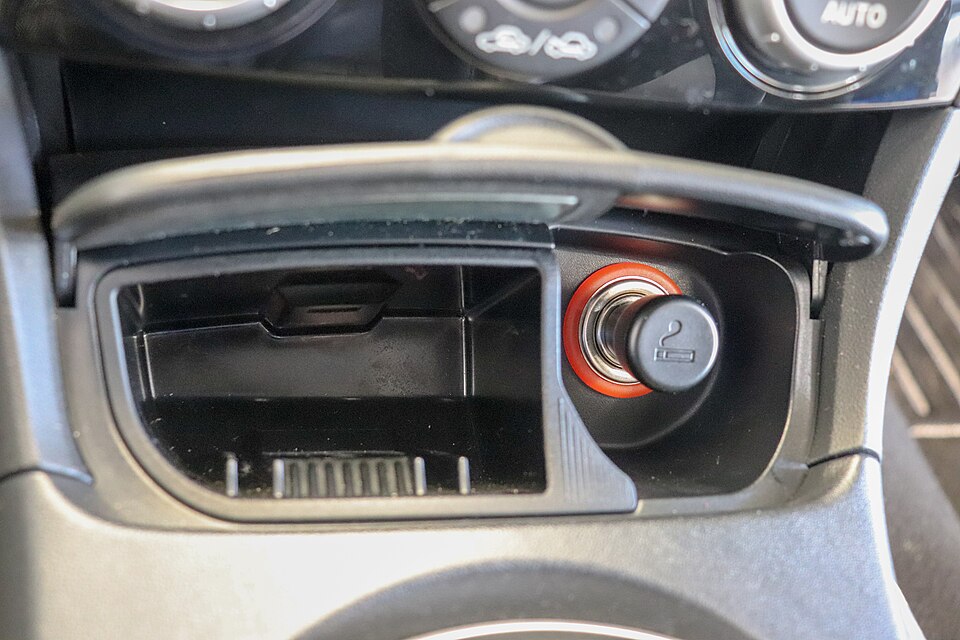
This glowing red coil powered more than just cigarettes as it evolved from smoking accessory to essential power source. From the 1920s through early 2000s, car cigarette lighters came standard in automobile equipment. Drivers pressed in the cylindrical heating element, waited for it to pop out hot, and utilized it reliably for lighting cigarettes.
As smoking rates diminished due to health awareness in the late 20th century, these ports found new purpose energizing accessories like radar detectors and early cell phone chargers. Automotive manufacturers began substituting dedicated lighters with standardized 12V power outlets in the 1990s.
By the 2010s, USB ports presented better options for the growing number of electronic gadgets requiring power in vehicles. Drivers exchanged lighters for phone chargers and power adapters. Modern vehicles rarely include actual lighters, though the 12V socket design persists largely unchanged in many models as a legacy feature.
5. Cigarette Vending Machines
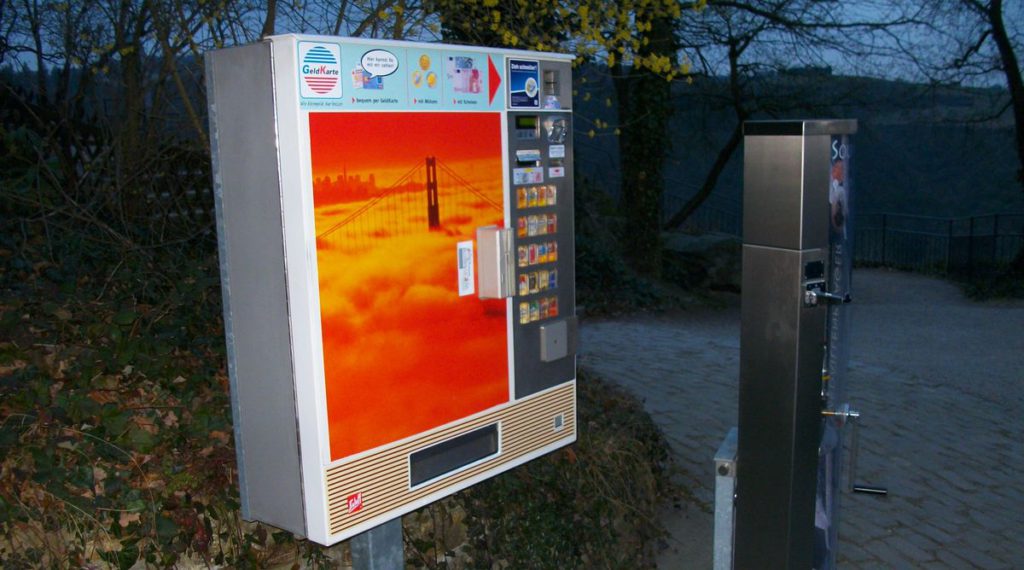
From the 1950s through the 1990s, cigarette vending machines stood in restaurants, bars, hotel lobbies, and gas stations nationwide. These coin-operated dispensers offered 24/7 access to cigarettes when smoking was commonplace in public spaces. The machines were compact, designed for placement in bars and public venues, and featured convenient access to smoking products before regulatory crackdowns.
The machines operated without age verification, creating significant underage access issues as public health awareness grew. Before restrictions, smoking was widely viewed as a normal adult activity rather than a major health hazard. Laws restricting youth access began targeting these machines in the 1980s, with the 1992 Synar Amendment and subsequent legislation effectively eliminating them from most states by the early 2000s.
Public health campaigns simultaneously highlighted smoking dangers. These machines have been completely obsolete in most countries due to legal bans. “Removing these machines was a step toward protecting public health,” said Surgeon General Vivek Murthy in 2024, noting that their disappearance helped reduce youth smoking rates.
4. CRT Televisions
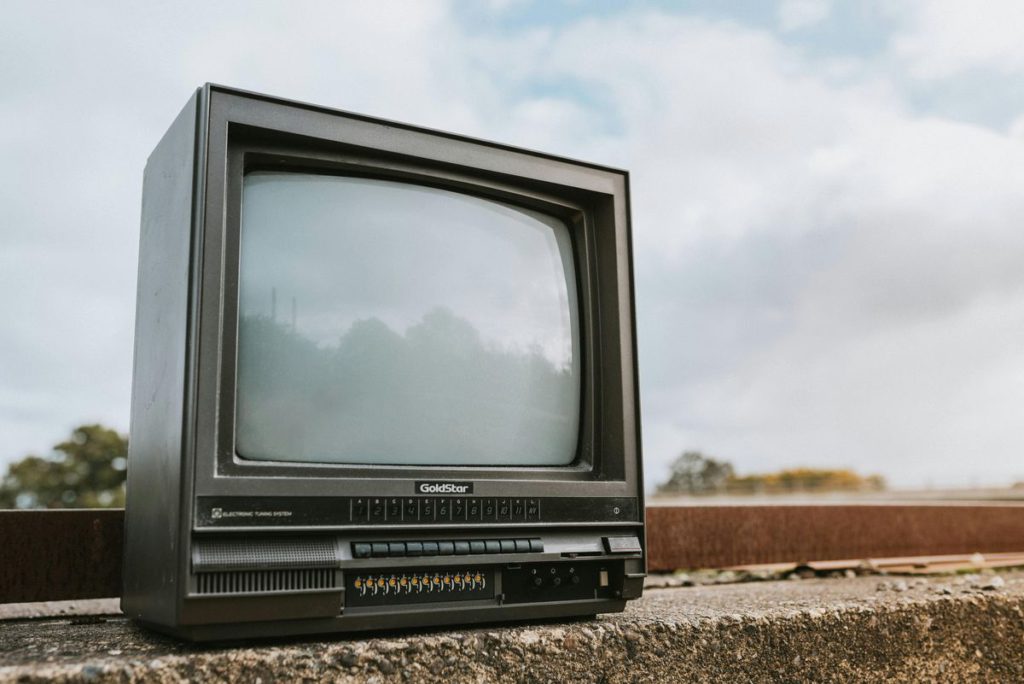
The warm glow of phosphor dots greeted television viewers for decades as cathode ray tube TVs dominated home entertainment from the 1950s through early 2000s. Their screens incorporated curved glass fronts and internal electron guns painting images line by line.
Powering on these sets produced distinctive electrical hums while pictures gradually materialized. CRT displays offered resolutions up to 480p and delivered reliable picture quality for decades.
Despite bulk and weight (often exceeding 100 pounds), CRT monitors offered remarkable durability. Many performed reliably for 15-20 years. These entertainment centers appeared heavy and bulky compared to flat-panel alternatives.
They consumed more energy while providing limited resolution by modern standards. Like a traditional cooking method that takes longer but creates deeper flavors, CRTs delivered warm, distinctive picture quality that some still prefer.
Flat-screen technologies began surpassing CRTs in the early 2000s. By 2010, major manufacturers had discontinued CRT production entirely. Today, many gaming enthusiasts and film purists still seek CRTs for their handling of certain content.
3. Laugh Tracks
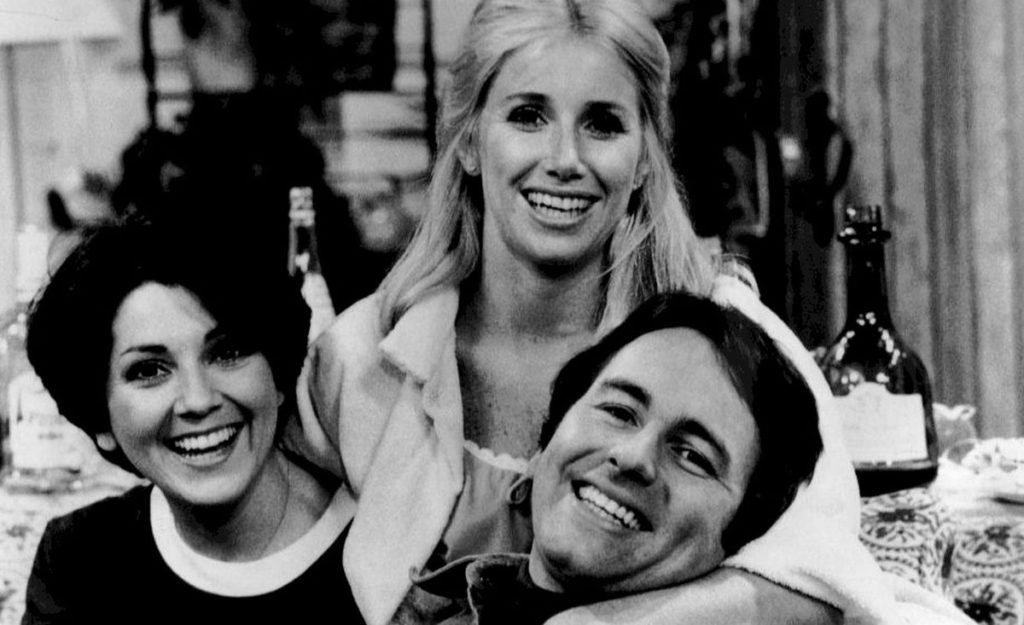
Comedies increased viewer enjoyment by 26% when accompanied by the sound of others laughing, according to early television research. From the 1950s through 1990s, over 80% of television sitcoms incorporated prerecorded audience laughter as a result.
Sound engineer Charles Douglass pioneered this technique to enhance comedic timing. These audio enhancements simulated audience response, creating pseudo-communal viewing experiences in isolated living rooms. The recordings filled silent gaps after punchlines, guiding viewers when to laugh.
Multi-camera productions heavily depended on these audio cues. They fostered warmer viewing experiences and established rhythm for scripted jokes. Picture laugh tracks as the TV equivalent of salt in cooking – overused by many, but critically important for the right effect.
Single-camera comedies like “The Office” (2005-2013) demonstrated laughter cues unnecessary. Modern audiences prefer authentic humor. The artificial nature of canned laughter became increasingly apparent over time.
Networks gradually phased out aggressive laugh tracks through the 2000s and 2010s. Today’s comedies utilize subtle audience reactions if any at all.
2. Dial-up Internet
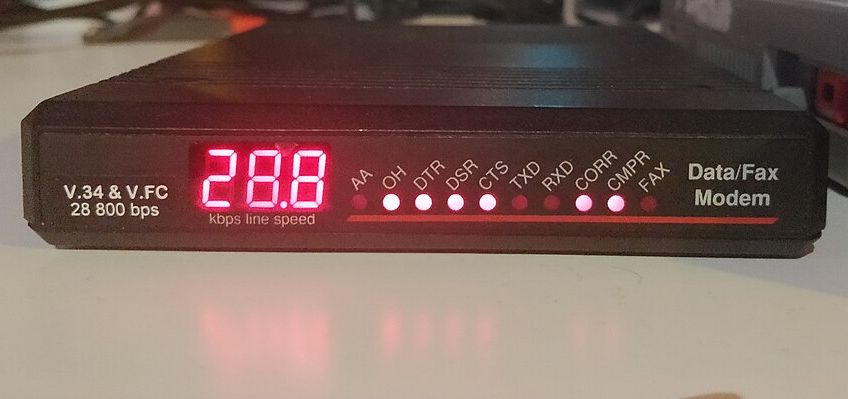
From the early 1990s through the mid-2000s, dial-up internet served as most Americans’ gateway to the digital world. The distinctive connection sequence—dialing sounds followed by electronic screeching and static—announced the transition from offline to online status. This technology used regular telephone lines to transmit data with maximum speeds of only 56 Kbps under ideal conditions, requiring modems emitting those distinctive connection tones.
Early websites, chat rooms, and email systems felt revolutionary despite glacial loading times by today’s standards. Dial-up enabled global internet access during its early years and offered affordability compared to dedicated broadband. Tech historian Kevin Driscoll notes that “dial-up created a distinctive relationship with the internet. Users had to actively decide to go online rather than existing in a state of constant connectivity, changing how people valued their digital experiences.”
One major limitation was the inability to use phone and internet simultaneously. Broadband adoption surpassed dial-up around 2004, with Wi-Fi creating always-available connections shortly thereafter. Internet speeds increased exponentially, from dial-up’s maximum 56 Kbps to today’s gigabit connections—a 20,000x improvement. This transformation fundamentally altered our relationship with information and each other, and while nostalgia exists for the distinctive connection sounds, no practical application remains for this technology.
1. The $2 Bill

The $2 bill remains the rarest denomination of US currency in circulation, with Thomas Jefferson’s portrait and Monticello featured on this unusual note. The bill features Thomas Jefferson on the front and the Declaration of Independence on the reverse. The Treasury Department continues printing these bills, but less than 1% of all currency printed is the $2 denomination.
Cultural superstitions have variously considered these bills as either good luck charms or unlucky, depending on regional beliefs. Some businesses and individuals collect rather than recirculate them, further limiting their appearance in daily transactions. These bills function as legal tender, though they’re often perceived as collector’s items and are frequently misunderstood by consumers and cashiers unfamiliar with them.
The ongoing movement toward digital wallets and cashless payments makes physical currency increasingly uncommon in general, with specialty bills like the $2 even less frequently encountered. Functioning $2 bills hold no premium value beyond their face value except in uncirculated condition or with printing errors.

